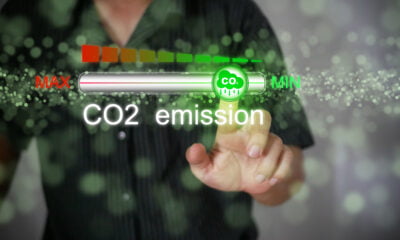Features
Sporting Goods and Sweatshops
Connor Sephton investigates how Nike faced up to its critics and tackled staff issues in its overseas operations.
Following press criticism regarding the working conditions of its labour force, Nike has become keen to show its commitment to improving the quality of life for factory workers in Eastern Asian countries such as Indonesia and Vietnam. The multibillion dollar empire has forged allegiances with the Fair Labour Association in America, while also commissioning an audit from Ernst & Young into its business practices abroad.
On 18 May 1998 a columnist from The New York Times had described Nike as setting a benchmark standard for factory working conditions. This was prompted by a speech in May of the same year, from Nike’s founder Phillip Knight, in which he spoke of 12 promises to transform the health and safety, pay, training and minimum age of employees.
They were certainly promises that needed to be made. Life magazine’s iconic image of a young Pakistani boy stitching a football damaged public perception of the company in 1996. And in 1997 it was revealed that factory workers in Vietnam were being subjected to levels of toxic fumes 177 times above the limit imposed by the Vietnam Government. Nike’s ethical reputation was tarnished.
Yet, in May 2001, three years after Knight had promised “some fairly significant announcements”, Global Exchange published a 118-page report called “Still Waiting for Nike to Do It”. The people-centred human rights organisation, which plays a key role in highlighting the plight of factory workers, wrote in detail about which promises had been met and what reforms were still needed.
One such promise was that the air quality in each workplace would conform to US standards and be inspected regularly to ensure the compliance of Nike’s contractors. However, with managers in factories receiving advance warning of inspections, and air quality reports not being released into the public domain afterwards, critics feared that there would be a lack of accountability, and that scrutiny would not be possible.
Earlier, in September 2000, a Global Alliance report focused on Indonesia and funded by Nike’s own contributions to the consortium confirmed: “We have raised disturbing issues about the workplaces in Indonesia where some of their products are made. No worker should be subject to some of the working conditions reported in this assessment.” From its survey of 4,000 workers, representing a total of 54,000 employees in nine factories, Global Alliance found that three in every ten members of staff said they had seen or endured sexual abuse – this amounts to 18,000 victims when the data is extrapolated. There were also reports of violence from supervisors towards those working slowly, and threats of cleaning toilets as punishment if targets weren’t met. Critics were discovering that, less than 18 months after Phillip Knight’s passionate speech, Nike was still battling to improve the conditions for employees in its 500,000-strong, 50-country supply chain.
The Indonesian survey feedback wasn’t all bad. The hour-long interviews with factory workers revealed that relationships between employees and supervisors were generally positive; and many workers stated they wouldn’t hesitate to ask for help and advice from their line manager if it was required. Despite these positive elements, though, in February 2001, three months before the release of “Still Waiting for Nike to Do It”, Nike produced a remediation plan in response to the damning findings relating to its Indonesian factory conditions.
So, what real influence have these significant documents had on the ethical practices of Nike as it tries to maintain growth and preserve profits without compromising workers?
One of the issues, both then and now, is overtime. While some factory workers willingly volunteer to take on more work to increase their income, others speak of pressure to work longer shifts involuntarily – with some women even sacrificing their right under Indonesian law to two days of menstrual leave a month. To combat this, Nike’s “Corporate Responsibility Report” (www.nikebiz.com/crreport), which forms the basis of Nike’s newly formed code of conduct, outlines how subcontracted factories can be penalised through a grade system if more than 10 percent of their workforce clock in excess of 60 hours a week. It also requires employees to take one day off in every seven. And where workers were once exploited over pay, all factory employees are now paid in line with the minimum wage set by local government. The report states that hourly rates should be “equitable, competitive and locally relevant”.
Nike’s “Corporate Responsibility Report” agrees, stating “Nike believes that local wage setting is best done by negotiations between workers, labor representatives, the employer and the government. […] Nike increasingly sees the need for further regional and global discussions among suppliers, governments, NGOs [non-governmental organisations] and – importantly – workers, about the degree to which wages across the industry are meeting workers’ needs.”
Yet, progress in the factories once said to represent “the hidden cost of commercialisation” is strong. While it might be a good thing that the products created by Nike promote healthy living, the ethical health of its business is equally important, if not more so. And part of that is ensuring a good quality of life for the hundreds of thousands of workers in its supply chain.
Nike has at last caught up with The New York Times statement of 12 years ago; it really is now setting “a standard other companies should match”.






























